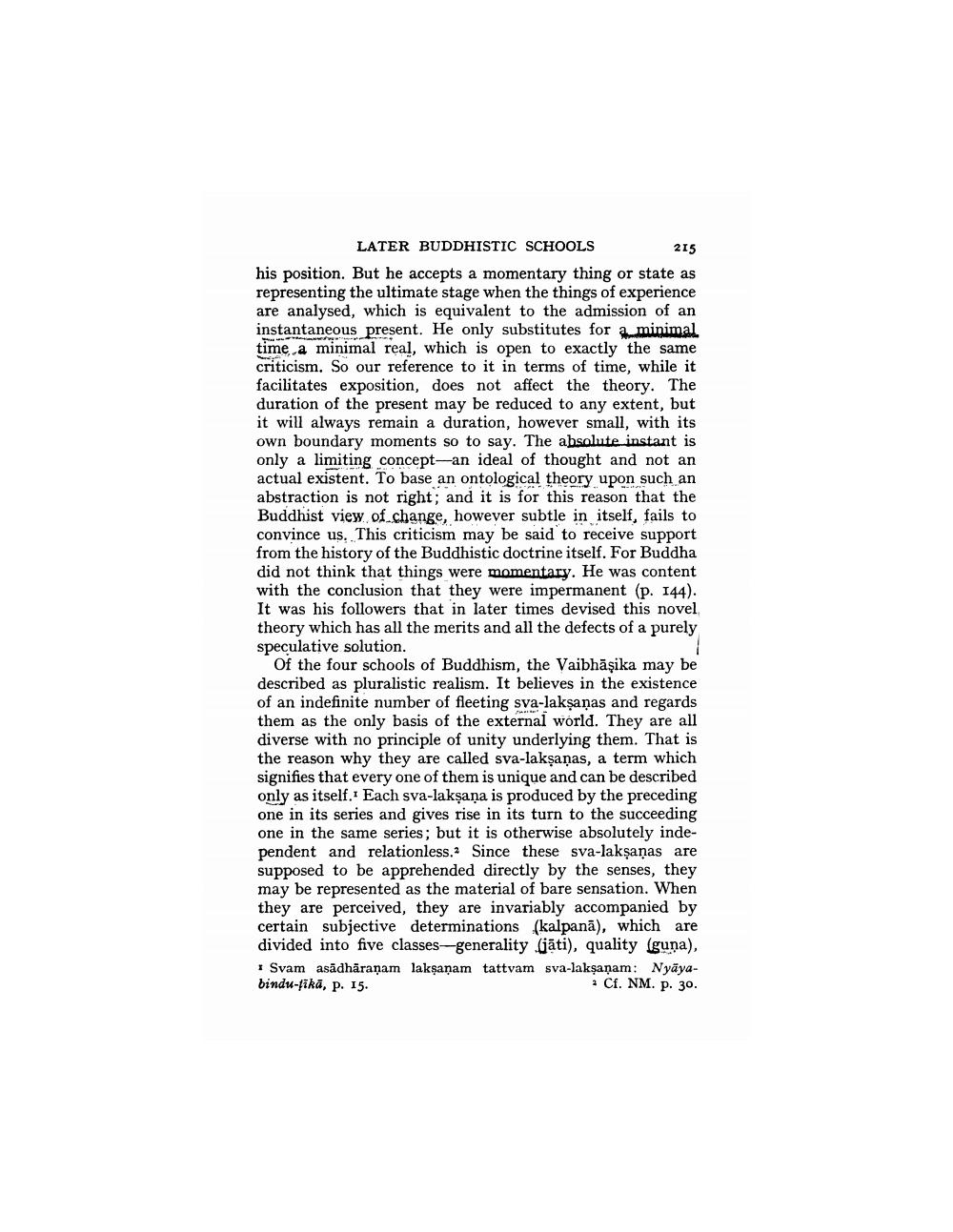________________
215
LATER BUDDHISTIC SCHOOLS his position. But he accepts a momentary thing or state as representing the ultimate stage when the things of experience are analysed, which is equivalent to the admission of an instantaneous present. He only substitutes for a minimal time a minimal real, which is open to exactly the same criticism. So our reference to it in terms of time, while it facilitates exposition, does not affect the theory. The duration of the present may be reduced to any extent, but it will always remain a duration, however small, with its own boundary moments so to say. The absolute instant is only a limiting concept-an ideal of thought and not an actual existent. To base an ontological theory upon such an abstraction is not right; and it is for this reason that the Buddhist view of change, however subtle in itself, fails to convince us. This criticism may be said to receive support from the history of the Buddhistic doctrine itself. For Buddha did not think that things were momentary. He was content with the conclusion that they were impermanent (p. 144). It was his followers that in later times devised this novel theory which has all the merits and all the defects of a purely speculative solution.
Of the four schools of Buddhism, the Vaibhāsika may be described as pluralistic realism. It believes in the existence of an indefinite number of fleeting sva-lakşaņas and regards them as the only basis of the external world. They are all diverse with no principle of unity underlying them. That is the reason why they are called sva-laksaņas, a term which signifies that every one of them is unique and can be described only as itself. Each sva-laksana is produced by the preceding one in its series and gives rise in its turn to the succeeding one in the same series; but it is otherwise absolutely independent and relationless. Since these sva-laksanas are supposed to be apprehended directly by the senses, they may be represented as the material of bare sensation. When they are perceived, they are invariably accompanied by certain subjective determinations (kalpanā), which are divided into five classes--generality (jāti), quality (guna),
Svam asādhāraṇam laksanam tattvam sva-laksanam: Nyāyabindu-fikā, p. 15.
Cf. NM. P. 30.




